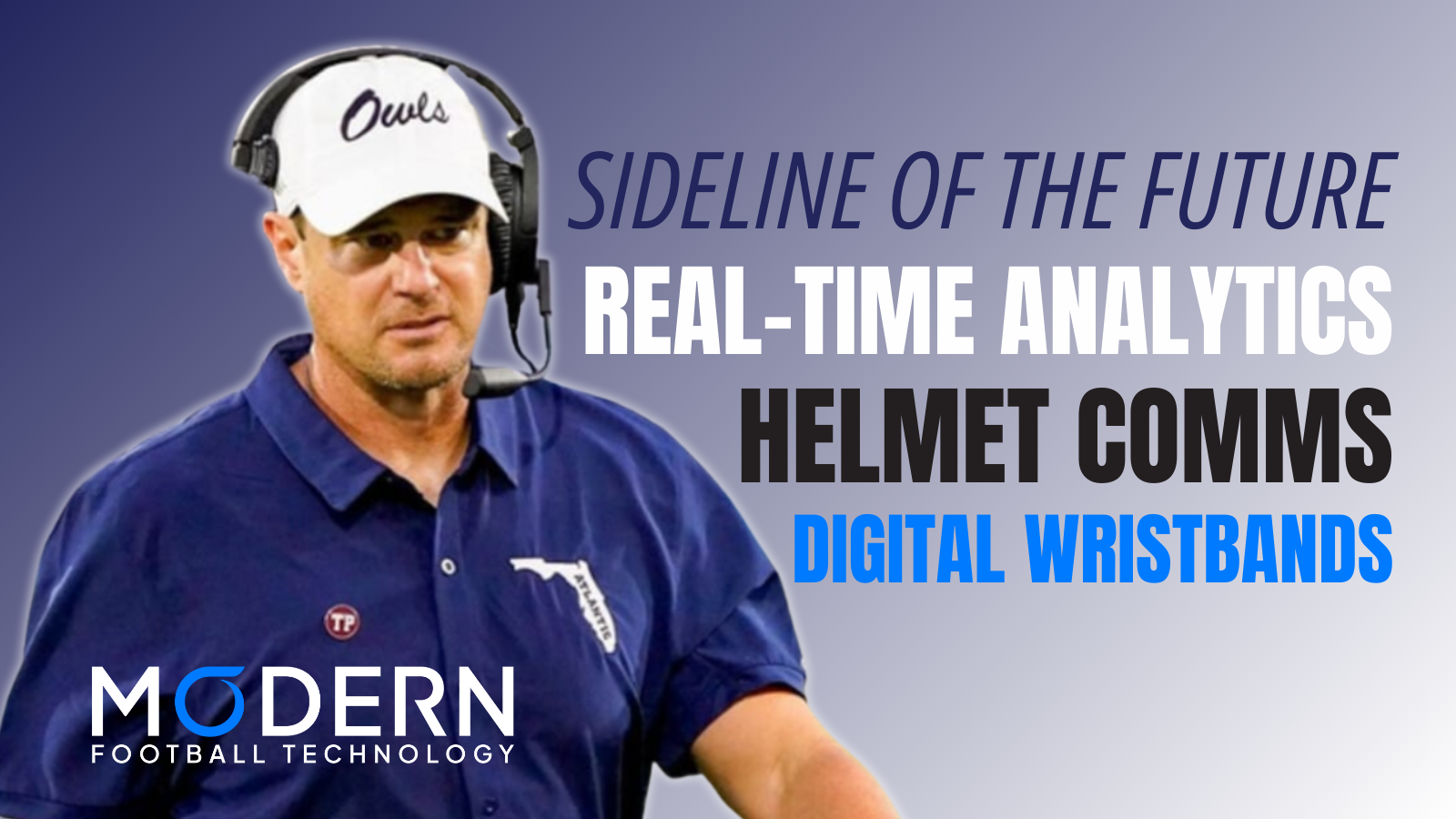
Tom Herman, head coach at Florida Atlantic University, opines on all things technology, what’s useful, what’s not, and how he stays ahead of trends to stay ahead of the competition.
Coach and Coordinator Podcast host Keith Grabowski often refers to football as a “thinking man’s game.” Yes, brute force and sheer will are requisites for victory. And yes, football remains a sport governed by regulated violence. But when every player on the field is big, strong, fast, and all else is equal, that’s when smart coaching most impacts wins and losses.
The coach who is most cerebral, creative, and deft at deciphering how and when to adjust the battle plan in the fog of war wins the day.
Tom Herman, head coach at Florida Atlantic University, is reputed for his analytical approach to coaching and lauded for his success as a play caller and offensive mastermind. With this growth mindset and imagination, Coach Herman is a 10% Coach. So it comes with no surprise to learn that he closely studies new tools and technologies and is on the leading-edge of adoption for those tools in which he identifies opportunity to improve strategic planning, player performance, as well as life off the field.
“Technology has made the efficiency of our work a lot easier,” says Herman. “It allows coaches a chance to go tuck their kids into bed or get home for a real dinner because they’ve saved some time.”
Having real-time analytics that can be updated as the game progresses is next-level stuff.”
Tom Herman, Head Coach, Florida Atlantic University Tweet
Modern Football
Many modern technologies are no longer cost-prohibitive. Tools, such as artificial intelligence, analytics, and digital wristbands, as well as the infrastructure required to support all of them, have matured. Competition in the marketplace has made them less expensive.
In turn, more and more coaches now deploy these tools as efficiency drivers throughout all workflows of the trade, from self-scouting, to game planning, to even in-game decision making.
These advances come at the same time as rule changes at the college level now permit tablets on the sideline and helmet communications. The top minds in our game are harnessing the power of these technologies to create the sideline of the future, and soon the press box of the future.
Real-Time Analytics
Film study and statistical computation of historical data have been used by coaches to construct game plans since the days of Paul Brown. The analysis of past tendencies as a predictor of future outcomes is not a new idea. Too much of the current interest in “analytics” ends at the sizzle and misses the steak.
The revolutionary step forward for our game is the newfound capability to analyze opponent tendencies in real-time.
“What has never been done before is the real-time analytics,” Herman says. “Having real-time analytics that can be updated as the game progresses is next-level stuff.”
To compute these tendencies at the speed of the game, Coach Herman trusts Modern Football Technology – a battle-tested platform used by high school, college, and professional teams.
“What Modern Football Technology has done is make your breakdowns and percentages real-time,” says Herman. “They’re on the cutting-edge.”
Coach Herman is careful to note that the machine doesn’t replace the man. Modern Football Technology is a tool for a play caller, not a replacement for him.
“I believe in the principle of probabilities,” Herman says. “If the probability of a good outcome doing x is 60%, and the probability of a good outcome doing y is 40%, I’m going to choose x most of the time. [But] there’s still the human element that understands the flow of a game and understands that every game has its own personality and its own feel. That’ll never be replaced by an algorithm.”
Other Allowable Tech
College football will have in-helmet communication starting this season. Tablets are also now permissible on the sidelines during all competition. While notable advancements, Coach Herman is already looking ahead to what else is possible.
“We do have the helmet communicators and video on the sideline,” says Herman. “I’m not taking away from the victory that that we got. But I think we left some meat on the bone.”
As costs to purchase the available technology are earmarked in athletic department budgets and stadiums are rewired with new infrastructure to manage the increased communications and data load, Herman predicts for the coming years that either helmet communicators or digital wristbands will be permitted on all 11 players, not just the “green dot”. He also envisions laptops in the press box (already legal in many states for high school football), which will accelerate the authority of real-time analytics.
“It’s much cheaper than it used to be,” says Herman. “If we’re going to spend millions, spend the extra 100 grand for the digital wristbands and laptops in my opinion.”
When to Spend
Coaches must evaluate cost versus value. When implementing technology tools, consider how much the tool enhances overall performance compared to its cost and prioritize tools that offer significant value aligned with budget.
At FAU, Coach Herman conducts a simple cost-benefit analysis. For example, if a tool costs 1% of the budget, will it make the program at least 1% better?
“You’ve always got to weigh the value that it provides you, the time savings that it provides you, the energy savings that it provides you versus the cost,” says Herman. “That’s the biggest thing as a head coach is weighing that value versus the cost. But so much technology is becoming more and more affordable.”
So remember coaches, if you’re not embracing these tools, you will be facing more coaches who are this upcoming season. Add them to your toolkit, or at minimum, become educated on what you’re up against now in the thinking man’s game. ![]()
About Modern Football Technology: Battle-tested, Modern Football’s platform provides real-time self-scout and opponent tendencies, while eliminating manual tagging into HUDL, DV Sport, and XOS. Trusted by teams at every level, see how top coaches leverage this platform for in-game decision making and play-calling success.
Book a demo today at www.teammofo.com/demo. And use the code CC10 to receive 10% off the first year.


